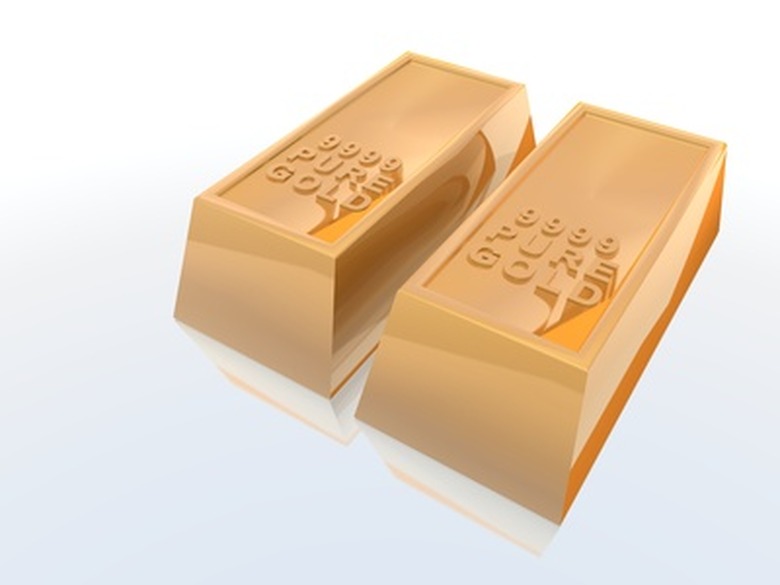Characteristics Of Density
Regardless of the extent of your background in the physical sciences, you have almost surely come across the term "density" at some point in your online, television, book or other media travels. You perhaps know that "dense" means "thick" in both literal and metaphorical senses: That friend who never quite "gets" basic jokes or repeatedly tries to "sweeten" his coffee with table salt might be described as such.
In physics, however, density has a specific definition. The density equation is simple: Take the mass of an object (the SI, or système internationale, unit is the kilogram or kg) whose matter is evenly distributed and divide this value by the total volume of the object (the SI unit in this case being the cubic meter or m3, although often liter or L is used) and density is the result. For historical reasons, this quantity is often denoted by the Greek letter rho or ρ.
The density formula is therefore
\(ρ = \frac{m}{V}\)
"Heavy" vs. Dense
"Heavy" vs. Dense
In everyday language, when someone offers the claim "Lead is heavier than mist" or the like, we typically assume that the speaker is talking about a similar "amount," or volume, of each. Strictly speaking, though, if "heavy" implies "massive" or "weighty," and the claim that some unspecified amount of one substance is more massive than an unspecified amount of a different substance is inane. 1,000 liters of air, for example, is heavier than a cubic micrometer of gold.
The Density of Water: a Benchmark
The Density of Water: a Benchmark
By definition, one liter (1 L) of water at a temperature of 4 degrees Celsius (4 °C) has a mass of a kilogram (1 kg). This is convenient because everyone handles water just about every day, and most people therefore have a decent sense of how "heavy" it is compared to other substances, including metals.
Note that calculating density is meaningless without the proper matching of the units in the numerator and the denominator. That is, if you use kg for mass, you must use m3 for volume. An equivalent unit, grams per milliliter, or g/mL, is more commonly encountered in both scientific and lay contexts. A mL is equivalent to a cubic centimeter or cm3, so this can also be written g / cm3.
Density: Gold vs Lead
Density: Gold vs Lead
Gold is pre-eminent among the so-called precious metals. It is also extremely dense, with a density of 19.3 g/cm3. That makes the metal almost 20 times as dense as water. Given that you already know that a liter of water weighs one kilogram, or 2.2 pounds, you can conclude that the 1 L (1,000 mL) bottle of water you sip your way through during chemistry class would have a mass of:
\(19.3\times 2.2 = 42.46\text{ pounds}\)
Lead, in comparison, checks in at 11.3 g/cm3, which is very dense, but only about 60 percent of that of gold. Why, then, do you suppose that when people talk about unusually dense or heavy things, they so often compare it to lead instead of gold, as in the expression "That joke went over like a lead balloon"? It is because lead is simply so much more plentiful, which is in turn linked to the fact that it costs so much less, meaning that practically everyone sees, touches and handles far more lead than gold in her lifetime.
Density in Other Considerations: Lava Lamps
Density in Other Considerations: Lava Lamps
The lava lamp, originally invented during the 1970s in the U.S., takes advantage of the principles of density to create a mildly mesmerizing effect. Oil that is more dense than water is placed inside a water-containing tank forming the bulk of the lamp. Because it is "heavier," the oil sinks to the bottom. But when the lamp is turned on, the oil heats up, "loosens," becomes less dense and rises to the top of the water. It then cools and sinks to the bottom, starting the cycle anew.
Cite This Article
MLA
Beck, Kevin. "Characteristics Of Density" sciencing.com, https://www.sciencing.com/characteristics-density-6955314/. 21 December 2020.
APA
Beck, Kevin. (2020, December 21). Characteristics Of Density. sciencing.com. Retrieved from https://www.sciencing.com/characteristics-density-6955314/
Chicago
Beck, Kevin. Characteristics Of Density last modified August 30, 2022. https://www.sciencing.com/characteristics-density-6955314/
